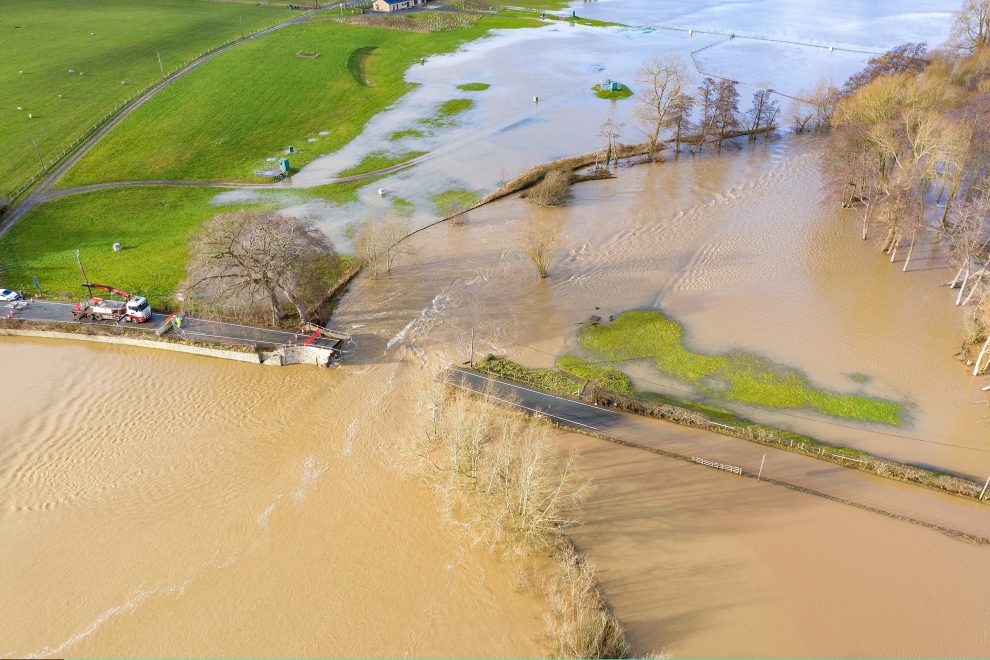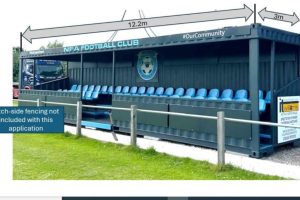A RETIRED civil engineer has joined the ranks of dissatisfied councillors angry that plans for a “much-needed” bridge have been scrapped.
At a cabinet meeting this week, Denbighshire Council voted to abandon plans to replace Llanerch Bridge, which was destroyed during Storm Christoph in 2021 when the River Clwyd burst its banks.
Council officers warned cabinet members that drilling into the riverbed could contaminate a water supply to 85,000 homes and that if the council persisted with the bridge, the authority could be liable for millions of pounds.
The decision caused controversy in the chamber as the council had promised residents the bridge, which would reconnect Trefnant and Tremeirchion, before Welsh Water raised concerns about the contamination of a freshwater aquifer.
The council spent £1.5m of Welsh Government funds designing the new bridge.
Now, retired civil engineer David Evans, from Caersws, says he doesn’t believe the council is correct in cancelling its plans to build a new bridge.
Mr Evans said he worked in a number of different roles in piling in civil engineering, including the design, management, and tendering processes, working with several notable specialist companies such as Cementation and Expanded Piling Ltd.
“I am a retired civil engineer, now living in mid-Wales, and in all my 35 years within the piling industry, working with major piling contractors covering the UK, with experience of many types of bored piling for bridges, multi-storey buildings etc, this is a very weak excuse for not building a much-needed bridge,” he said.
“Contamination of an aquifer has never been a discussion point in the industry, and given bored piles founded in sandstone, migration of water will just not happen, as the piles are concreted almost immediately.
“Most modern bridges require piled foundations to take out the sheer forces from breaking, but also provide a fixing in more competent strata to avoid erosion and improve scour protection from flooding.”
He added: “The county council would be well advised to approach piling contractors and competent geotechnical engineering companies to confirm my views, providing them with the site investigation report.”
Mr Evans’ opinion mirrors that of Cllr James Elson.
Cllr Elson told council officers at the cabinet meeting that local contractors, who’d worked on the A55, maintained a temporary bridge lasting 10 years could be built. Tremeirchion councillor Chris Evans told the Local Democracy Reporting Service that he was “disappointed” in the cabinet decision.
Cllr Evans speculated what might happen if other bridges, such as Pont y Cambwll or an A55 flyover bridge at St Asaph or Rhuallt, were compromised or needed foundation repairs.
“If Pont y Cambwll was taken (by bad weather or flooding), are we going to be in the same predicament?” he said.
“Residents have come to me and said bridges over the A55 are over that aquifer.
“What would happen if one of those bridges were damaged or the footings needed addressing?
“I’m disappointed by it. I understand Denbighshire’s concerns.
“But we need a positive outcome of this for the residents. They have known about the aquifer from day dot, so why have we persisted with £1.5m of public money. I think audit and governance need to look at this. That’s a lot of money.”
A Denbighshire Council spokesperson said: “Denbighshire County Council has worked through an entire optioneering and design consultation phase with Balfour Beatty over several years which included comprehensive ground surveys, geological studies of the location, erosive flow of the river, and physical constraints of the area.
“It was always the desire and intention of the Council to replace the bridge and as such £1.5m of direct Welsh Government funding was spent to ensure a robust process could be conducted to outline options and fully assess these options against the associated risks and issues from a design and construction perspective.
“Unfortunately, no design option could be found that completely eliminated the risk of damage to the freshwater aquifer and the drinking water supply to 85,000 properties in the North Wales area both during and after construction activity.
“Any form of bridge design whether temporary or permanent required foundations installed to a minimum depth in order to support the structure during periods of flooding or heavier river flow.
“Failure to install such foundations would present a risk of the structure collapsing and potentially presents a danger to life if it were to collapse during such times.
“As such, in cooperation with Dŵr Cymru, it was agreed to recommend ceasing the bridge building project in order to safeguard this water supply, a decision that was ratified by Cabinet this week.
“The Council is unable to comment on the views of external third parties who have not been involved in the design process.
“It is intended that DCC representatives will hold a public meeting with the local community groups to fully explain this decision and discuss their concerns.”
















